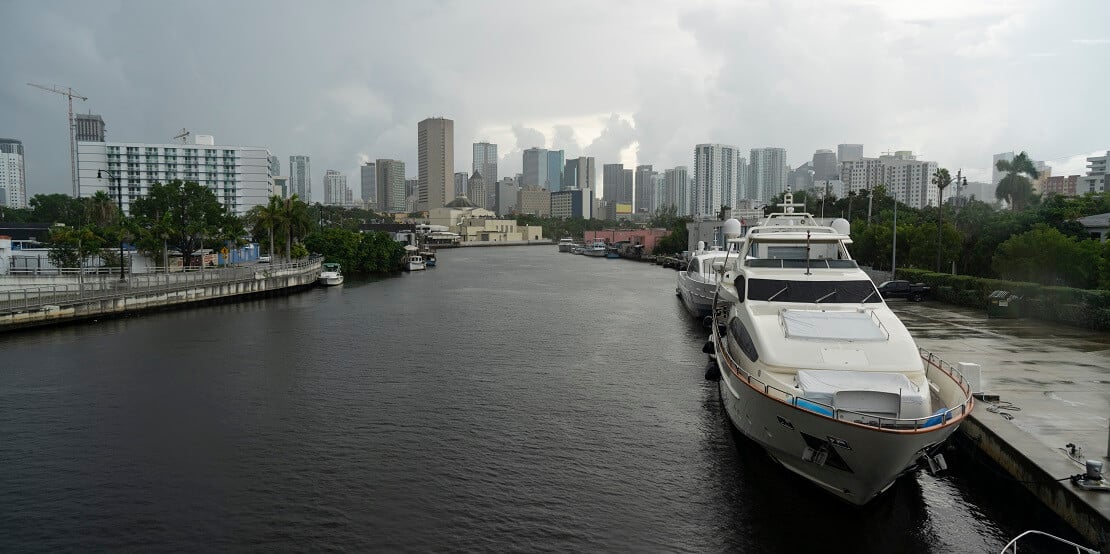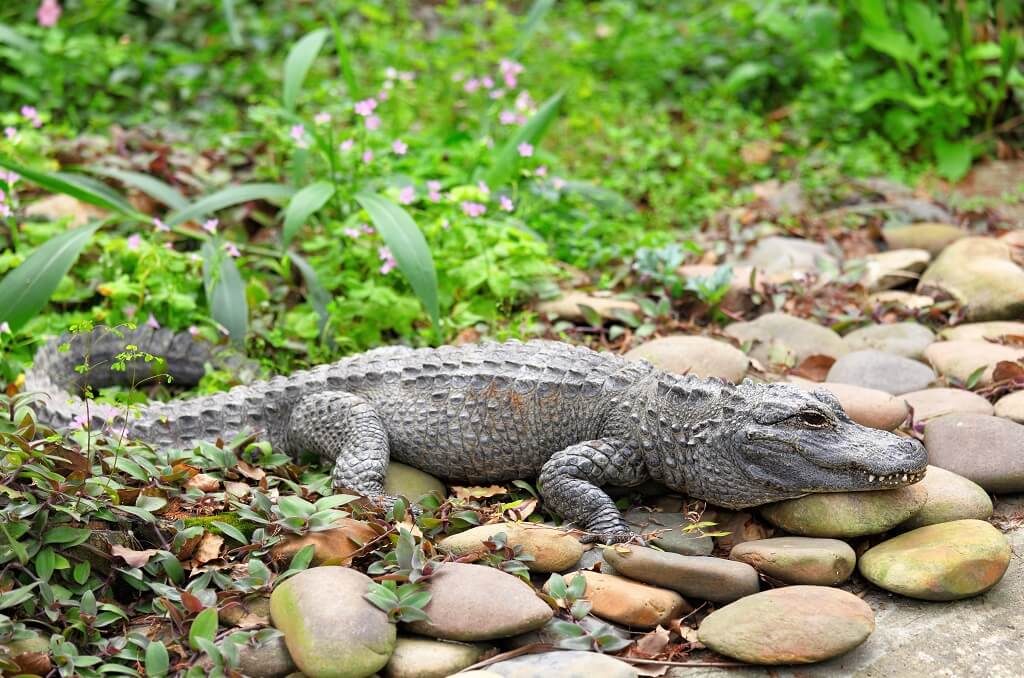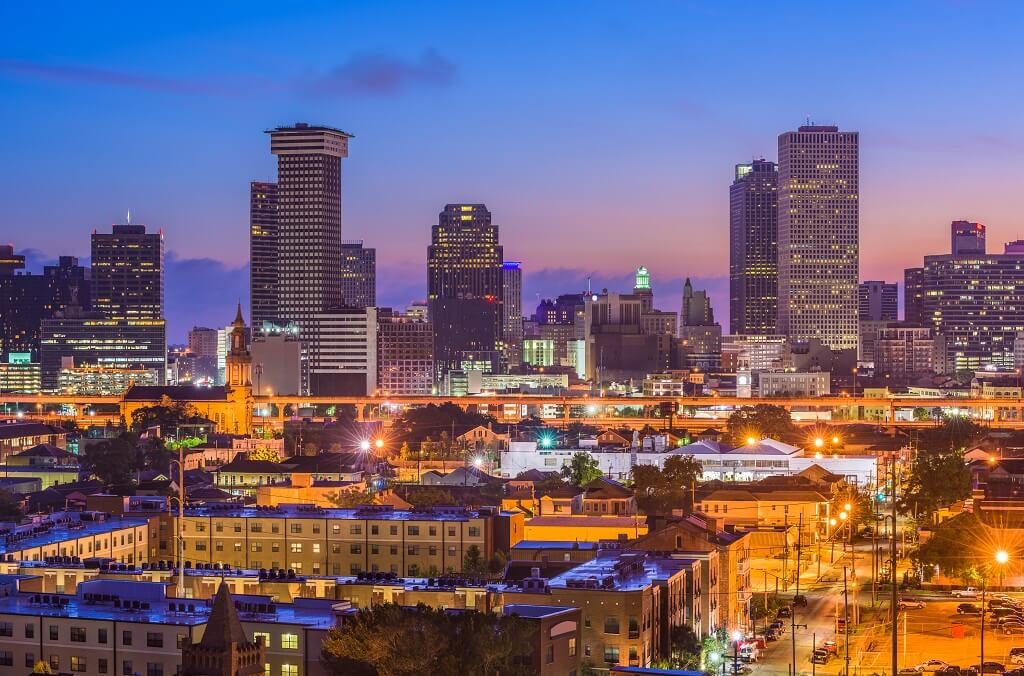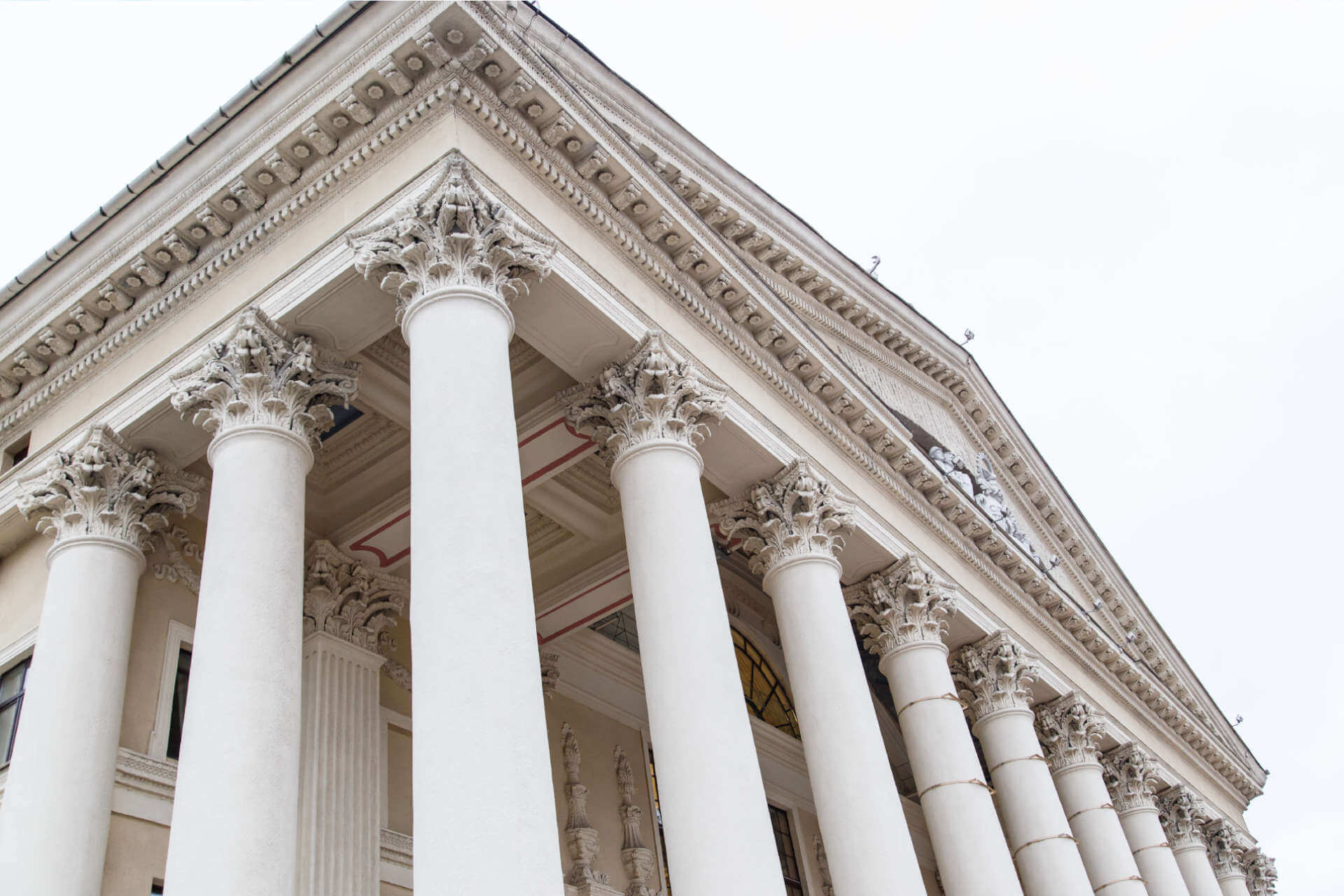
Louisiana Criminal Defense Lawyer– David E. Stanley, APLC Louisiana Criminal Defense Lawyer
Louisiana
Many people think of Louisiana when they think of New Orleans. This is because Louisiana was a strategic port since its earliest days near the mouth of the Mississippi River. As a result, the city is an amalgamation of cultures unlike any other. It is awash with French and Spanish influences since it was once part of France, and the U.S. purchased it from France in 1803. The “Creole” are the people who are descendants of early Spanish as well as French colonial settlers as being early mixed-race and black residents.
This state causes your heart to beat faster and your senses to tingle. The Mardi Gras celebration represents the intensity of Louisiana’s spirit. When the French introduced Mardi Gras to Louisiana, it was a simple carnival celebration held just before the start of Lent.
The simple celebration, however, was transformed into an extravagant festival in New Orleans, complete with parades, music, parties, street dances, and costumes. Although New Orleans is world-renowned for its Mardi Gras extravaganza, Mardi Gras celebrations are held in towns and cities throughout the state. As a result, the excitement surrounding the event is contagious.
It’s not just the Carnival that gets people excited. Louisiana life is spiced up with foods like gumbo, andouille, etouffee, sauce piquant, cayenne pepper, Tabasco, and crawfish, thanks to her rich Creole, Cajun, and French heritage. And the sounds of jazz, blues, and zydeco tingle the senses and keep the feet tapping. Louisiana Criminal Defense Lawyer
Louisiana Top Attractions
Louisiana has a rich cultural and historical heritage. It is a well-known tourist destination in the south and has many thrilling attractions for all ages. You can listen to stories from the personal perspective of life on plantations or listen to live jazz in a traditional club on Bourbon Street. There are many Louisiana places to add to your list while traveling through the Bayou State. Southern hospitality is evident everywhere you travel in Louisiana. Anyone who is looking to travel to one of the most stunning states of the nation will be welcomed by welcoming locals. The lively culture and stunning beauty will blow your mind off. Here are the top Louisiana tourist destinations to prepare you for an unforgettable trip. Louisiana Criminal Defense Lawyer
French Quarter
New Orleans’ epicenter for visitors is the French Quarter. It was founded in the early 1800s and is the most prestigious neighborhood in New Orleans. It is, however, a vital part of history, culture, and entertainment. The French Quarter comprises many streets. However, Bourbon Street is the most popular. It is a long stretch and is lined with old buildings with balconies that overlook the street.
The French Quarter is also home to numerous iconic tourist attractions. There are a variety of excellent Creole and Cajun restaurants in the area.
Cafe du Monde is one of them. Jackson Square, St. Louis Cathedral, and the French Market are also must-see places.
The French Quarter bustles with activity throughout the day and at night with street performers and musicians, creating a lively atmosphere. It’s the center of nightlife, featuring a variety of nightclubs and bars.
Mardi Gras World
Visit Mardi Gras World to immerse yourself in Mardi Gras. Mardi Gras, a yearly festival held in New Orleans, is a global phenomenon. Mardi Gras World, a site to learn about the past and customs of the celebration, is a must to experience in Louisiana. Mardi Gras was established in New Orleans back in 1703. It has since grown into an iconic festival. The celebration is attended by more than a million people every year. Visitors can witness the stunning floats throughout the city and the many events that take place throughout the city. Mardi Gras World is a tour that will take you behind the scenes of floats for the festival. In addition, you can go on a self-guided tour through the warehouse to observe how the floats are constructed. Louisiana Criminal Defense Lawyer
Vermilionville Historic Village
Louisiana is known for its rich history of multiculturalism. This is before European settlement. Explore the diverse cultures in Vermilionville Historic Village. It is focused on the influence of Native American, Acadian, and Creole cultures that inhabited the region. The Lafayette’s Vermilionville Historical Village is a living museum that takes visitors back to the past. It will transport you back to the past as soon as you step into the village. It is spread over 23 acres and is home to restored buildings and houses dating back to the 18th century. It is possible to walk through the village to see how life was back when it was. La Chapelle des Attakapas and L’Ecole schoolhouse are only two of the most famous landmarks in the village. Animals from the farm are also seen wandering about the village, providing a real-life replica of the past. There is a restaurant within the town and live music every night.
Jean Lafitte National Historical Park and Preserve

Louisiana is home to five national parks. One of them that is the most popular is Jean Lafitte National Historical Park. Every year, thousands of visitors go to the park to take in the beautiful natural landscape of the state. The Jean Lafitte National Historical Park, which includes the surrounding area, is situated on the Mississippi River Delta. The park’s name refers to a pirate’s treasure, and it is home to numerous treasures of the past that are worth exploring for visitors to Louisiana. Before entering the park, make sure to stop at the main office. Maps, trail information, and tours are available at the park’s headquarters. There are many tours within the national park, including nature walks and boat tours. Nature walks with guides lead groups on a path through the region to observe the numerous species of plants and animals and discover the area’s story. Boat tours let you explore the park’s swamps to view the wetland region along the river banks. It is possible to spot alligators if you keep an eye out!
Honey Island Swamp Tour
Find a thrilling tour guide to explore the most extensive Louisiana swamps. Honey Island Swamp Tours is an excellent family-friendly activity you can enjoy together. Tours run by companies have been running throughout Honey Island Swamp for decades for visitors to be in close contact with wildlife and enjoy breathtaking images of these beautiful wetlands. Knowing what you’ll find in the water is challenging, so be sure you have your camera. There is the option to go on a private boat tour or ride on a huge passenger boat. The knowledgeable captain will lead you through the water. Discover the history of the swamps and discover fascinating tales of local legends. A variety of species of wildlife are available to observe. There are often alligators, turtles, snakes, birds, and other animals.
Parishes to Visit in Louisiana

East Baton Rouge Parish
The French expression “baton rouge,” meaning “red stick,” is the name given to the parish. The red stick was utilized to mark the boundaries of tribes by Native Americans. A perfect mix of city facilities and the local culture can be located in the central Baton Rouge residential area. The neighborhood is home to local favorites like Beausoleil and Eliza and is easily accessible to major chains like Whole Foods, Gap, and Bonefish Grill. The Louisiana Arts and Science Museum, along with the Louisiana State Capitol, are some of the distinctive features of East Baton Rouge Parish. There’s also the Old State Capitol and the Louisiana State Capitol. In addition, there’s the Baton Rouge Zoo and Rural Life Museum. There are the Pentagon Barracks, the LSU Museum of Art, and the Southern University Museum of Art.
St. Tammany Parish
St. Tammany Parish is located on the north shore of Lake Pontchartrain, only 40 minutes from New Orleans. The parish, which includes the following cities and towns: Abita Springs, Bush, Covington, Folsom, Lacombe, Madisonville, Mandeville, Pearl River, and Slidell, offers both big-city culture and small-town charm. It was initially established in 1903. The first Lake Pontchartrain bridge between St. Tammany and New Orleans is inaugurated. It goes by several names, including Pontchartrain Toll Bridge, Watson-Williams Bridge, Five-Mile Bridge, and Maestri Bridge, after being made a free State bridge in 1938. It’s a terrific area to live in St. Tammany Parish. The parish’s location, which includes being located on Lake Ponchartrain and adjacent to both New Orleans and Baton Rouge, is unrivaled. Overall, the schools are excellent. Louisiana Criminal Defense Lawyer
Lafayette Parish
Lafayette, Louisiana, lies in the center of Louisiana’s Cajun and Creole Country, where people are known for letting the good times roll. The city of Lafayette, Louisiana, is just 35 miles north of the Gulf of Mexico and is situated in the middle of Lafayette Parish at the junction of Interstates 10 and 49 between New Orleans and Houston. Because of Lafayette’s inexpensive cost of living, top-notch universities, and expanding economy, residents thrive. If you’re seeking a place where enjoying life includes having access to delicious food, top-notch entertainment, rich culture, and cozy southern amenities. Louisiana Criminal Defense Lawyer
Livingston Parish
Originally, Livingston Parish was a component of the Florida Parishes. On February 10, 1832, the State Legislature divided St. Helena Parish in half, resulting in the creation of the parish. Although historians disagree on which Robert or Edward Livingston the parish was named, it is undisputed. When Tangipahoa Parish was established in 1869, the parish lost the area. Later, when Maurepas Island was included in the parish, it gained further land. Livingston Parish is 32 miles long by 30 miles wide and has a total area of 642 square miles on 410,880 acres. The parish’s geography varies from gently undulating hills covered in slash pine and hardwood woods in the north to lush cypress forests and marshes that border Lake Maurepas and the Amite River in the south. The home market is just starting to grow, and the communities are secure.
Tangipahoa Parish
The parish of Tangipahoa was established on March 6, 1869. The parish of Tangipahoa is situated in southeast Louisiana. On the parish’s southeast edge is where Lake Pontchartrain is located. An Acolapissa word that means “ear of corn” or “people who collect corn” is the source of the name Tangipahoa. During the Reconstruction era in 1869, the parish was established. Ponchatoula, also known as “America’s Antique City” and the “Strawberry Capital of the World,” provides visitors with the chance to peruse antique shops and discover one-of-a-kind handmade goods and works of art. The city is renowned for its family-friendly activities and healthy atmosphere.
Ascension Parish, a must-visit destination close to Baton Rouge and New Orleans, is renowned for its Cajun-inspired cuisine, rich history, sights, sounds, and scents of vibrant festivals, and fantastic art scene. The Louisiana Legislature established Ascension Parish Court in 1976. All Ascension Parish outside the municipalities, including Donaldsonville, Gonzales, and Sorrento, fall under its purview. Over the years, it has had some of the United States’ fastest parish (county) growth. As a result, a high-quality way of life can be found in Ascension Parish and the neighborhood.
The city’s attractions, including universities, commercial centers, and cultural events like world-class museums, orchestras, and ballets, are easily accessible because of its proximity to Baton Rouge and New Orleans. In the adjacent cypress swamplands, Ascension Parish, situated in the center of plantation country, provides access to beautiful fauna and landscape.
Festivals include the Louisiana Balloon Festival, the Jambalaya Festival, and the Boucherie Festival. Six significant antebellum residences, three museums, the Historic Site of Fort Butler, the Tanger Outlet Center, Cabela’s Outfitters, Houmas House Plantation, and the Lamar-Dixon Expo Center are all located in Ascension and the neighboring environs.
The region’s incredible success may be attributed to years of industry investment, a top-notch public school system, minimal crime, and a community of people who cooperate for the sake of everyone. Louisiana Criminal Defense Lawyer
Iberville Parish
Iberville Parish, one of Louisiana’s biggest parishes, is located in southeast Louisiana between the Atchafalaya National Heritage Area and the mighty Mississippi River. Iberville was “found” by the French adventurer Pierre LeMoyne, Sieur d’Iberville, in 1699, but Indian tribes had long known about its fertile delta soil and numerous waterways. As a result, Iberville, formerly an agricultural region, has changed over the years to reflect the circumstances. Sugarcane and soybean fields have always been abundant in the Parish. Still, throughout time, the hardwood lumber industry, river commerce, and industrial growth have all been crucial to the parish economy.
West Baton Rouge Parish
The Mississippi River has been the seat of passion for West Baton Rouge over the years. Almost 300 years ago, the Mississippi transportation route and the fertile terrain next to the river attracted the first people to this area. The river continues to serve as the boundary between the parishes of East and West Baton Rouge.
Today, tourists come to West Baton Rouge because of its prime location along a major thoroughfare in Plantation Country. Until the 1960s, the parish was primarily agricultural; today, it is home to one of the biggest deep-water ports in the world, as well as significant chemical and manufacturing companies. Four settlements make up West Baton Rouge: Brusly, Addis, Erwinville, and Port Allen, which serves as the parish administrative center.
The primary activity in this region was sugar cane growing, which began with modest early plantations before expanding to larger ones with several hundred acres in size in the early 1800s. Most plantations at the time had their sugar mills. As a result, West Baton Rouge offers an enticing blend of robust business, close access to major cities, and the tranquility and security of small-town living. With simple access to the comforts and facilities of the capital city, it offers a rural or small-town environment suitable for stable family life. Louisiana Criminal Defense Lawyer
East Feliciana Parish, LA
East Feliciana Parish in Louisiana is well-known for its historic landmarks and scenic beauty. In the times of cotton, it was a legal commercial, educational, and academic hub. As a result, many charming, historic towns and breathtaking country roads exist. The remains of the former Centenary College are located about 30 miles northeast of Baton Rouge in East Feliciana Parish’s hilly terrain. The liberal arts college was established in 1825. It is now the main attraction at Centenary State Historic Site. It tells the story of a once-successful men’s college that rose to prominence during the Civil War.
The peaceful setting is just 30 minutes away from Baton Rouge Airport. The amenities include bird watching and fishing massages, gifts, massages, and stargazing for any occasion. The Jackson Spillman Loop starts and ends in Jackson. It takes you through some of the most beautiful roads. The roadway is mostly straight, and the terrain is a bit rocky. There are ten crossings of creeks. Some creeks are suitable for swimming or picnicking. Jones Creek Road is steep and hilly. No shops are en route, so take plenty of water and snacks.
Jackson has a wide range of dining options and other nearby stops. Milbank Historic House (circa 1836) is a historic Greek Revival home that used to be Jackson’s first bank. Or visit the Republic of West Florida Museum to see a restored century Old Cotton Gin and a 1920s pipe organ, vintage cars, and carriages.
Pointe Coupee Parish, LA
Pointe Coupee Parish is surrounded by rivers, basins, and many large and small lakes. It’s a Sportsman’s Paradise. It contains beautiful historic homes, historic sites, and museums. Outdoor options include watersports at Old River or False River and trails for biking and hunting. There are also opportunities to go hunting, hiking, and occasionally trail riding. The New Roads Main Street area will draw you in with its charming small-town appeal. You can plan your itinerary with movie tours, antique trails, or biking/hiking trips. Pointe Coupee Parish, bordered by three waterways inland (the Old River, Atchafalaya River, and the Mississippi River), is well-known for its sparkling water and outdoor activities and is bordered on three sides.
West Feliciana Parish, LA
West Feliciana Parish is famous for its “hills and hollows” that restrict and define growth. Yet, residents love the tranquility and peace of the parish’s natural and wooded areas. The Tunica Hills of West Feliciana is the southernmost portion of the northern deciduous forest. The limestone geology is the foundation for the stunning hardwood-climax forest. Today, year-round recreation is available in the Feliciana hills with their unspoiled woodlands and the nearby sports park. There are Bed & Breakfast inns and motels that provide comfortable accommodations for weekends away. Small-town festivals provide all kinds of local culture, from art and Hummingbirds to Christmas in a country setting. St. Francisville, West Feliciana, has cafes, restaurants, and boutique shops. There are also antique and art galleries filled with the unexpected. For guided tours, five beautifully restored plantation homes and gardens are open every day. Every March, as the azaleas begin to reach their peak of bloom, other private homes are featured in the annual Audubon Pilgrimage commemorating the artist’s visit to the region, with hostesses clad in award-winning period costumes. West Feliciana is the perfect location for romantic weddings in intimate settings, weekend getaways, celebrations of special anniversaries or special occasions, outdoor activities, or simply relaxing. St. Francisville seems to slow down enough to make a lasting memory. Louisiana Criminal Defense Lawyer
Places to Visit in Louisiana
Baker, LA
Baker, Louisiana, is located in East Baton Rouge County, 9 miles north. The city’s inhabitants are within the Baton Rouge metropolitan region. Baker was named after Josephus Baker, a plantation owner. East Baton Rouge Parish, founded in 1812, was where Baker lives. It also is the residence of Ossie Brown, who served as the East Baton Rouge Parish district attorney from 1972 until 1984.
Baker Regional Shopping Center is close to Jefferson Park, Heritage Museum, and Chamberland Park. Baker Park, Jefferson Park, and Harding Park are popular tourist places within Baker. They provide various amenities. Tourists also visit the Heritage Museum. There are multiple shops to shop at, including the Baker Regional Shopping Center and Furrs Shopping Center, as in La Petite Shopping Center. Some local churches are Redeemer Lutheran Church, Harding Street Baptist Church, and Baker Presbyterian Church.
Baton Rouge, LA
Baton Rouge is Louisiana’s Capital City and is the heart of everything Louisiana. With a prime, central area just an hour from New Orleans and Lafayette. Baton Rouge is the ideal city to discover the diverse culture of this great state. The state’s Capital City showcases the rich heritage, music, and natural beauty that residents and visitors enjoy. In addition, Baton Rouge is rich in political and cultural heritage with French, Spanish, Creole, and Native American roots. It’s evident in the cuisine, buildings, and history. Explore Baton Rouge, whether you’re here on business or for pleasure.
Central City, LA
Central City is located in the middle of Louisiana, the largest municipality of the fifteen Louisiana parishes that surround the City of Baton Rouge. The population is approximately 27,000. Central City was established in 2005 and is approximately 12 miles northeast of Baton Rouge. It was home to 26,864 residents in 2010. It is the most populous municipality within the 15 nearby parishes in Baton Rouge.
Greenwell Springs, LA
Greenwell Springs can be described as an area within central Louisiana. It is located within the Baton Rouge metropolitan region. It was previously a distinct neighborhood that was not incorporated into East Baton Rouge Parish. In memory of the Greenwell family, the resort was constructed in 1850. The resort included a pavilion, cottages, and a hotel. Robert W. Greenwell bought the land that is now known as Greenwell Springs. He began to develop the area into an agricultural area and constructed ten healing springs. Although the springs were located close to one another, each was believed to possess distinctive mineral properties. It was thought that this indicated they came from different levels below the ground.
Pride, LA
Pride is an unincorporated community in East Baton Rouge Parish, Louisiana. Pride is situated close to the center of Louisiana, which is part of East Baton Rouge County. Its population is less than 6000, with 70% of which are Caucasians and 27% being Black/African American. Pride is home to a lot of seniors and young adults. The crime rate is comparable to that of the average US metropolis. Pride is at the 52nd percentile of security. Forty-eight percent of cities have a better security score than 52%. This means that 52% of towns can be considered riskier. This study is only relevant to Pride’s current boundaries. Pride is home to the criminality of 25.73 per thousand residents during a typical year. People living in Pride think the city’s southwest region is the most secure. Louisiana Criminal Defense Lawyer
Zachary, LA
Zachary is a pioneer in its quality of life as well as its educational and social opportunities and numerous facilities. It’s a beautiful location for families to raise their children and live. Zachary is famous throughout the state for its top-rated community schools with top-quality sports facilities, state-of-the-art medical facilities, and the number one ranking in the region. Zachary, with a nearly 18,000 population, is the #1 family-friendly city within the Baton Rouge area. It is a perfect blend of the charm and ease of a small town with Baton Rouge as its capital. Louisiana Criminal Defense Lawyer
The city offers compassionate medical treatment, including Oschner’s Health Center and Lane Regional Medical Center. It’s only 15 minutes from Zachary’s Baton Rouge Airport. Living in Zachary and being known for having low crime rates and a high population, you’ll be safe, secure, and comfortable. You’ll find many historic homes, buildings, and other structures in the town that highlight our heritage. Zachary hosts many fun events all through the year. For the whole family, There are plenty of events to choose from, including concerts, sporting events, and holiday celebrations.


